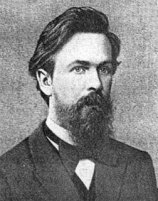From Lars Syll One of the most beautiful results of probability theory is Markov’s inequality (after the Russian mathematician Andrei Markov (1856-1922)): If X is a non-negative stochastic variable (X ≥ 0) with a finite expectation value E(X), then for every a > 0 P{X ≥ a} ≤ E(X)/a If the production of cars in a factory during a week is assumed to be a stochastic variable with an expectation value (mean) of 50 units, we can – based on nothing else but the inequality – conclude that the probability that the production for a week would be greater than 100 units can not exceed 50% [P(X≥100)≤(50/100)=0.5 = 50%] I still feel humble awe at this immensely powerful result. Without knowing anything else but an expected value (mean) of a probability distribution we can deduce upper limits for
Topics:
Lars Pålsson Syll considers the following as important: Uncategorized
This could be interesting, too:
tom writes The Ukraine war and Europe’s deepening march of folly
Stavros Mavroudeas writes CfP of Marxist Macroeconomic Modelling workgroup – 18th WAPE Forum, Istanbul August 6-8, 2025
Lars Pålsson Syll writes The pretence-of-knowledge syndrome
Dean Baker writes Crypto and Donald Trump’s strategic baseball card reserve
from Lars Syll
 One of the most beautiful results of probability theory is Markov’s inequality (after the Russian mathematician Andrei Markov (1856-1922)):
One of the most beautiful results of probability theory is Markov’s inequality (after the Russian mathematician Andrei Markov (1856-1922)):
If X is a non-negative stochastic variable (X ≥ 0) with a finite expectation value E(X), then for every a > 0
P{X ≥ a} ≤ E(X)/a
If the production of cars in a factory during a week is assumed to be a stochastic variable with an expectation value (mean) of 50 units, we can – based on nothing else but the inequality – conclude that the probability that the production for a week would be greater than 100 units can not exceed 50% [P(X≥100)≤(50/100)=0.5 = 50%]
I still feel humble awe at this immensely powerful result. Without knowing anything else but an expected value (mean) of a probability distribution we can deduce upper limits for probabilities. The result hits me as equally surprising today as forty years ago when I first run into it as a student of mathematical statistics.
[For a derivation of the inequality, see e.g. Sheldon Ross, Introduction to Probability and Statistics for Engineers and Scientists, Academic Press, 2009]
